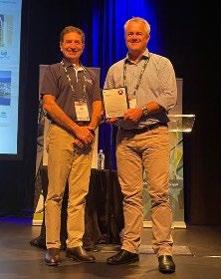WORLD WATER DAY
VALUING WATER On 22 March every year we celebrate World Water Day, to reflect on the importance freshwater. The theme for 2021 is Valuing Water. World Water Day celebrates water and raises awareness of the 2.2 billion people living without access to safe water. It is about taking action to tackle the global water crisis, focusing on achieving Sustainable Development Goal (SDG) 6: water and sanitation for all by 2030. Economic development and a growing global population mean agriculture and industry are getting thirstier and waterintensive energy generation is rising to meet demand. Climate change is making water more erratic and contributing to pollution. As societies balance water resource demands, many people’s interests are not being considered. How we value water determines how it is managed and shared. The value of water is much
20
more than its price – water has enormous and complex value for our households, culture, health, education, economics and the integrity of our natural environment. If we overlook any of these values, we risk mismanaging this finite, irreplaceable resource. SDG 6 is to ensure water and sanitation for all. Without a comprehensive understanding of water’s true, multidimensional value, we will be unable to safeguard this critical resource for everyone’s benefit. VALUING WATER: FIVE DIFFERENT PERSPECTIVES 1. Valuing water sources – natural water resources and ecosystems. All water is generated by ecosystems. And all the water we abstract for human use eventually returns to the environment, along with any contaminants we have added. The water cycle is our most important ‘ecosystem service’. Higher value must be given to protecting the environment
to ensure a good quality water supply and build resilience to shocks such as flood and drought. 2. Valuing water infrastructure – storage, treatment and supply. Water infrastructure stores and moves water to where it is most needed and helps clean and return it to nature after human use. Where this infrastructure is inadequate, socio-economic development is undermined and ecosystems endangered. Typical valuations of water infrastructure tend to underestimate or not include costs, particularly social and environmental costs. It is difficult to recover all costs from tariffs (known as full cost recovery). Only part or all of the operational costs are recovered in many countries, and public funds cover capital investments. 3. Valuing water services – drinking water, sanitation and health services. The role of water in households, schools, workplaces and health care facilities is critical.
ENGINEERING FOR PUBLIC WORKS | MARCH 2021



























